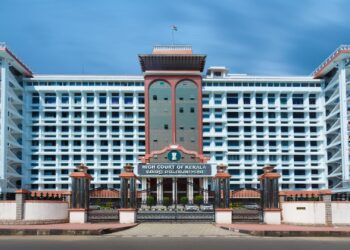Chief Justice of India (CJI) DY Chandrachud recently highlighted the need to address the ableist perspective inherent in our architectural models, intellectual resources, and choices of physical or institutional design, which often overlook the needs of the disabled.
Illustrating his point, CJI Chandrachud mentioned practical examples like narrow lift doors and entry thresholds, which, while unnoticed by those without disabilities, pose significant obstacles for people with mobility issues.
“Beyond the legal framework, our architectural models, intellectual resources, and choices of physical or institutional design frequently adopt a singular ableist perspective. The law now recognizes that these barriers create disabilities and exclude persons from equal participation in social, economic, and cultural spheres,” he stated.
He emphasized the need to overcome systemic ableism to foster a more inclusive and equal society. CJI Chandrachud was delivering the inaugural address at the India Accessibility Summit and State Disability Commissioner’s Conclave 2024 in Bengaluru on Saturday.
He pointed out that the under-representation of persons with disabilities due to these barriers also excludes them from public discourse, violating their civil rights and compromising their citizenship and fundamental freedoms.
“This exclusion deprives our public discourse of valuable input. We are left with an overwhelming number of ableist perspectives that dominate our social conscience and influence how we view the world,” he added.
Citing Caroline Perez’s findings on workplace bias, he drew a parallel to ableism, stating, “Our physical infrastructure and some of our policy considerations are similarly ableist. They arise from a lack of participation and further entrench this lack of participation, creating an endless loop of exclusion.”
The CJI highlighted several initiatives and success stories breaking this loop, including Karnataka’s ‘Participatory Governance in Disability’ policy, which promotes participation through various social programs. He also commended Indian corporate institutions for leading by example in creating diverse workspaces, noting that inclusive hiring practices have become ‘better economic and institutional choices.’
CJI Chandrachud also emphasized the importance of addressing non-visible disabilities (NVDs) and the stigma surrounding them. He referred to a 2014 report in the Economic Times, which found that 71% of children with disabilities live in rural areas with fewer support structures.
“Active diagnosis, education, and awareness campaigns will go a long way in overcoming the stigma and prejudice around NVDs,” he asserted.
In conclusion, CJI Chandrachud called for continuous and cooperative efforts to dismantle the ‘shameful walls of exclusion.’
He quoted Javed Abidi, a pioneer in the disability rights movement, who once said, “I don’t want the future generations of people with disabilities to experience an India that does not include them.”
Emphasizing the role of laws and technology as instruments of change, he stated, “Laws and technology are but instruments of change. Disability and accessibility are both complex social phenomena, and the solutions lie in social dialogue. Dismissed as objects of ridicule, exploitation, and segregation, persons with disabilities have long endured institutional indifference. An accessible, dignified public life for all can be achieved by deliberately addressing the remnants of this indifference.”

















